As all my regular backcountry hunting partners know, I have never, ever been lost. However, I will admit that I’ve come close.
Years ago, Lori and I were hunting hogs and turkeys in Florida with our old friend Don Davis. Late one afternoon, Don dropped me off on a road several miles from camp so I could look for the barbecue. The terrain was confusing and swampy with few defining features, but I carefully kept track of the clearings I walked through and didn’t anticipate any difficulty backtracking my way to the road.
Darkness falls abruptly in the Deep South, and after a fruitless hunt I found myself immersed in gloom. The clearings I’d used as waypoints soon began to look unfamiliar, and then I was walking blindly through briars and brush. There were no streams to follow. The tree canopy obscured much of the sky, but Nature had provided me with a celestial guide I couldn’t miss: comet Hale-Bopp glowing high to the south. I knew that if I walked toward the comet I’d eventually hit the road. Rather than thrashing around aimlessly trying to reconstruct my route in, I elected to go with the sure thing.
And I made it, although the long walk through mud and thorns was hardly pleasant. Shortly after I hit gravel, a pair of headlights appeared. Don and Lori had been driving the road in search of me for an hour. Although she was obviously glad to see me, Lori couldn’t help chiding. “I thought you never got lost!” she exclaimed.
“I was not lost,” I replied. “I merely experienced temporary spatial disorientation!” I’m proud of that turn of a phrase, given that I thought it up on the spot. Remember it in case you have to use it someday.
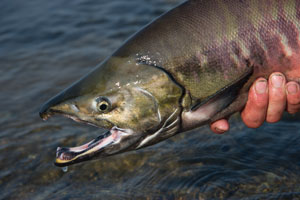
This chum salmon traveled hundreds of miles at sea before returning to the river where it was born. They can do it, but we can’t.
I know, I know…we have entered the age of GPS. It’s remarkable technology, but I fear that it is depriving a generation of hunters the opportunity to become comfortable with some essential outdoor skills. I know that I recently wrote a piece in this magazine about my decision to use GPS in certain situations, for which I received some criticism. I feel some empathy with my critics, but I did point out that I only use GPS to identify artificial property boundaries, a legitimate concern in this era of whopping trespass fines. I still don’t carry one for backcountry navigation.
There are practical considerations involved in that decision as well as the appeal of relying on tradition rather than technology. The more complex a tool, the more likely it is to malfunction. GPS units have batteries go dead, get wet, and fall out of pockets and packs. If you are totally dependent on a GPS system and haven’t been paying attention to your surroundings, such developments can leave you seriously lost.
Contrast the complexity of GPS with the simplicity of a magnetic compass. The Chinese began navigating by compass in the 11th century, and Europeans figured it out a couple of hundred years later. It revolutionized navigation at sea and is just as useful and reliable now as it was then. As long as you keep it away from magnets and heavy metal objects, almost nothing can go wrong with a simple compass (see below on page 38). I almost never leave the road without one. (I was traveling light on that trip to Florida and didn’t have my regular hunting pack with me in the swamp that night.)
Despite its simplicity and long track record, magnetic compasses are not infallible. Since the earth’s magnetic pole is not in the exact same location as the geographic pole, normally functioning compasses will all show some degree of variation, which increases the farther north one goes. The degree of variation is constant at any given location (well, almost constant—the pole does drift slowly) and is shown somewhere on most maps and charts. While this variation doesn’t mean there’s anything wrong with the compass, precise navigation should include compensation for variation, especially at high latitudes.
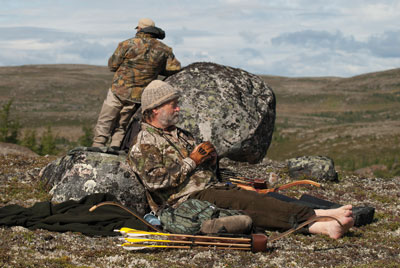
Labrador caribou country. Rolling terrain and lack of horizon features made me think constantly about where I was.
Magnetic compasses can malfunction. Aircraft with tubular steel frames slowly become magnetized by propeller action, which is why magnetic compasses are often inaccurate in bush aircraft. Compasses can also undergo magnetic reversal, which causes the needle to point south instead of north. Once a rare occurrence, this appears to be happening more frequently now, probably because people are carrying their compasses close to electronic devices that contain small magnets. While this phenomenon should be apparent if you’re paying attention, it could lead to serious error if you fail to notice it. Don’t carry your compass next to electronic devices in your pack.
Every hunter should be familiar with basic compass navigation, even if it is used for nothing more than finding north. Since so many resources are available on that subject, I’m not going to spend much time on it here other than to emphasize the importance of carrying a compass and knowing how to use it.
Understanding terrain provides the key to a simple way of staying oriented in the backcountry: navigating by topography. I do this subconsciously now whenever I’m in mountainous or even hilly ground. This technique basically involves answering a simple question repeatedly. If I were a drop of water, where would I wind up if I ran downhill? If you stay in the same drainage you started out in, you should always be able to get back to camp by walking down the fall line or parallel to it. If you cross a ridge into another drainage, you’d better remember it and know how to get back to a new starting point.
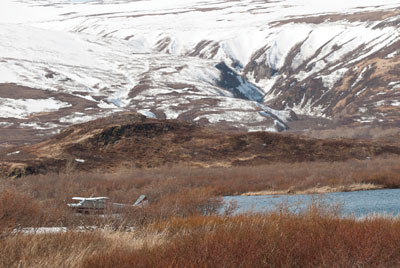
Spring bear camp, Alaska Peninsula. There was no place you could walk in a day from which you couldn’t get back to camp by walking downhill and following the lake shore. I once had a hunter who wouldn’t believe me.
Years ago, I was guiding a bear hunter who became distraught when he realized that I wasn’t carrying a GPS. The Alaska Peninsula is wild country, and he was terrified that we’d get lost. Our camp lay at the end of a lake twenty miles long surrounded by steep peaks we couldn’t cross if we wanted to. All we needed to do to find camp even under zero-zero visibility conditions was to walk downhill until we reached the lake and know whether to turn right or left when we reached the shore. To answer that question, we just needed to remember which side of the lake we’d started out on. It was impossible to get lost, but my hunter just wouldn’t believe it unless he had a GPS to confirm our position. He remained worried about it for ten full days.
Navigating by topography can break down if you have climbed a peak from which multiple drainages arise in a small area. With good visibility, there should be no problem if you’re paying attention, but in the jungle or zero-zero Alaska fog being off by a hundred yards can get you started down the wrong rat hole. That has happened to me in Hawaii and on Kodiak Island. It’s best to mark the head of the drainage you want to follow down, with bent branches, a rock cairn, or flagging tape (be sure to remove the latter before you leave).
This system also breaks down in terrain that lacks defined drainages. Most of the situations in which I’ve suffered “temporary spatial disorientation” have occurred in such situations, as was the case that night in the Florida swamp. Another time, a friend and I packed in on our horses to hunt moose not far from my home in Alaska’s Kenai Peninsula lowlands. This was great country for getting lost. Low knolls surrounded swamps and bogs, and water trickled in all directions. There were no horizon landmarks visible through the trees, and the day we packed in heavy overcast obscured the sky.
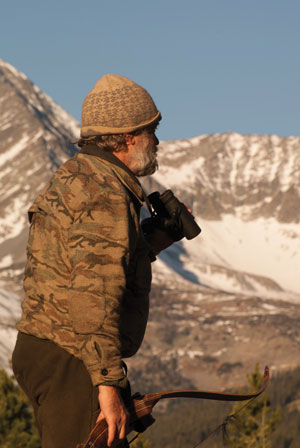
Don on a Montana goat hunt. In terrain like this, navigating by topography is easy.
Seismic oil and gas exploration years earlier had left a series of overgrown trails crisscrossing the area, and we pitched camp at an intersection. I figured that I could stay oriented just by remembering the sequence of turns I made as I set off along those trails. Riding my reliable quarter horse Pancho, I headed out that afternoon to look for moose sign and do some calling.
At first all went well when I headed back to camp an hour before dark, turning at trail intersections in the reverse order I remembered making them on the way out. Then I began to notice things I didn’t remember—a downed tree across the trail, a trickle of water I hadn’t crossed. I saw no horse tracks in muddy spots where they should have been. I backtracked. I checked my compass, but I was looking for a spot in the woods rather than a stream or trail I could follow back to camp. Light was failing fast. Acknowledging that I didn’t know where the hell I was, I began to prepare myself to spend a wet night under a spruce tree.
But I still had one trick up my sleeve, left over from all the old cowboy movies I’d watched as a kid. I dropped the reins, looped the ends loosely around the saddle horn, and gave the horse his head. An hour later we were back in camp, where Pancho knew a bag of oats was waiting.
My horse’s performance that night raises an interesting question. Is there such a thing as a sense of direction, and do people have one? Geese certainly know which way is south when they migrate in the fall, and spawning salmon (some species more than others) have a remarkable ability to return to the same stream—and often the exact spot—where they hatched from eggs, even after traveling thousands of miles at sea as adults.
However, most formal psychological studies in humans have failed to identify an innate “sense” of direction. This conclusion seems at odds with the common observation that some of our hunting partners do a better job of knowing where they are in the woods than others. However, if you put someone with a “good sense of direction” on a turntable in a totally dark room and spin him around for a while, he won’t be able to point to north except by luck. Even skilled pilots require instruments when flying in clouds, literally to tell them which way is up.
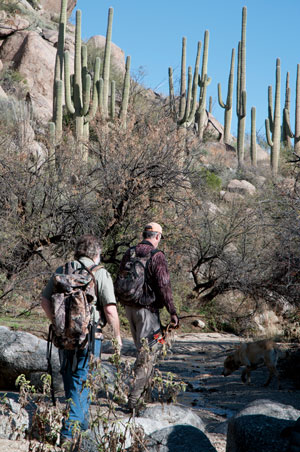
Staying oriented is especially important in the desert. Take a wrong turn, run out of water, and you’re in trouble.
So why are some people better at keeping their bearings than others? I think it is largely a matter of awareness and constant observation of one’s surroundings. I can almost always point to north, and when I can’t, I get edgy in a way I can’t even define. I keep track of where my hypothetical drop of water will wind up without consciously thinking about it. Interestingly, I am a lousy navigator in cities and towns, where these considerations don’t matter much.
People have been navigating “by the stars” even longer than compasses have been around, and that remains an important backcountry skill. Here in the northern hemisphere, we’re lucky. Polaris is always in the same place, and the “pointers” on the Big Dipper make it easy to find. If the northern sky is obscured by terrain or cloud cover other stars can be helpful, but the farther south you go in the sky the more their position changes with the time of night and the seasons. That’s why it’s prudent to take a look at the night sky before you crawl into your tent at the end of every long day.
Everything changes in the Southern Hemisphere. On my frequent excursions to places like Australia and southern Africa, I find the unfamiliar appearance of the stars overhead unsettling. Many of us will never have the pleasure of enjoying this problem, but if you do there is a standard way of orienting when the North Star is invisible on the opposite side of the world. Identify the Southern Cross—it’s an easy constellation, and any local will be able to point it out. Follow the long axis of the cross from the brightest star for four and a half times the length of the cross. Then drop an imaginary line from that point to the nearest spot on the horizon, which will be south. It’s a bit complicated, and always makes me miss Polaris!
No matter where you are, the sun rises in the east and sets in the west, and that’s a good way to maintain your bearings subconsciously. Because of the angle of the earth’s axis, the farther away from the equator you are, the closer the sun will be to the horizon at any time of day. That makes it tricky in places like Alaska, where the sun transcribes a wide arc during the summer and rises and sets well north of true east and west. (The opposite is true in the winter.) You’ll get used to it, but it takes some time.
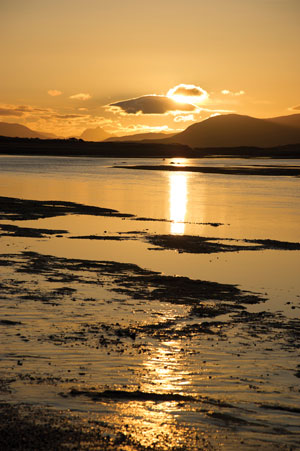
Coastal Alaska. No matter where you are, the sun rises in the east and sets in the west, but that may not be as helpful as it sounds.
The fiasco on my horseback moose hunt illustrates two more principles of backcountry navigation which, in that case, I did not use to full advantage. The first is the use of landmarks. When terrain features are clearly visible on the horizon, their utility is obvious. That wasn’t the case on that hunt, during which I couldn’t see anything beyond the tops of the trees. But the observant woodsman can always find landmarks along the way—a lone larch tree in a clearing on the right, a boulder by the side of the trail on the left. Memorize them as you go in and follow them in reverse order as you go out. If you don’t see the larch tree on the left thirty minutes after you pass the boulder on your right, it’s time to sit down, think, and retrace your steps.
The second is backtracking, a figure of speech now in common use by people who have never followed a track in their life. No matter whether they are subtle or distinct, you always leave tracks on the way in, and you should be able to use them as reference points on the way out, even if that means cutting a wide circle to hit your own track. There is no excuse for getting lost with snow on the ground (although I’ve seen people do it on lion hunts). Even on bare ground there’s usually an opportunity to leave a track in mud or sand, and you can always bend twigs over on the way in to create waypoints.
This piece is not meant as an anti-GPS tirade. It’s just a reminder that there are older, simpler means of keeping your bearings in the backcountry, and they should be part of every hunter’s outdoor skill set. We may lack a true, innate sense of direction, and we’ll never be able to match a salmon’s ability to swim from the mid-Pacific to the gravel bed where it was born. (That remarkable skill appears related to imprinting osmotic water gradients through the fish’s lateral line, although the details have yet to be worked out.) However, we do have the ability to keep track of where we are through knowledge and careful attention to our surroundings. In contrast to salmon and migrating waterfowl, people need to develop these skills rather than relying on their DNA.
That turns out to be a lot more satisfying than watching digital blips on a screen, and the batteries will never fail.
Don and Lori Thomas now live in rural Montana with their bird dogs. Although Don misses his editorial relationship with TBM, he stays busy writing about the outdoors for numerous magazines, with Lori providing photo support. His latest book, Traditional Bows and Wild Places, is now available at: donthomasbooks.com.





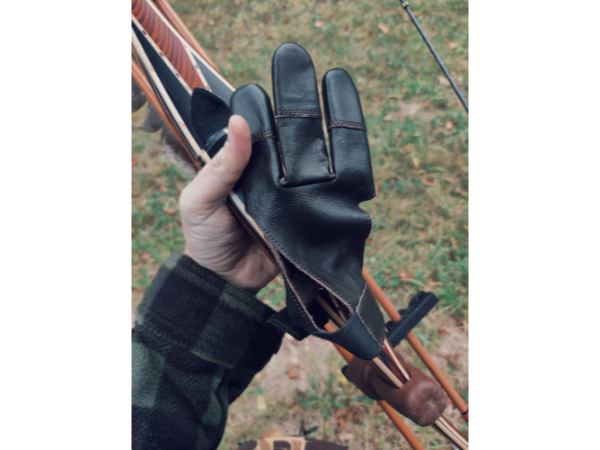

Leave A Comment